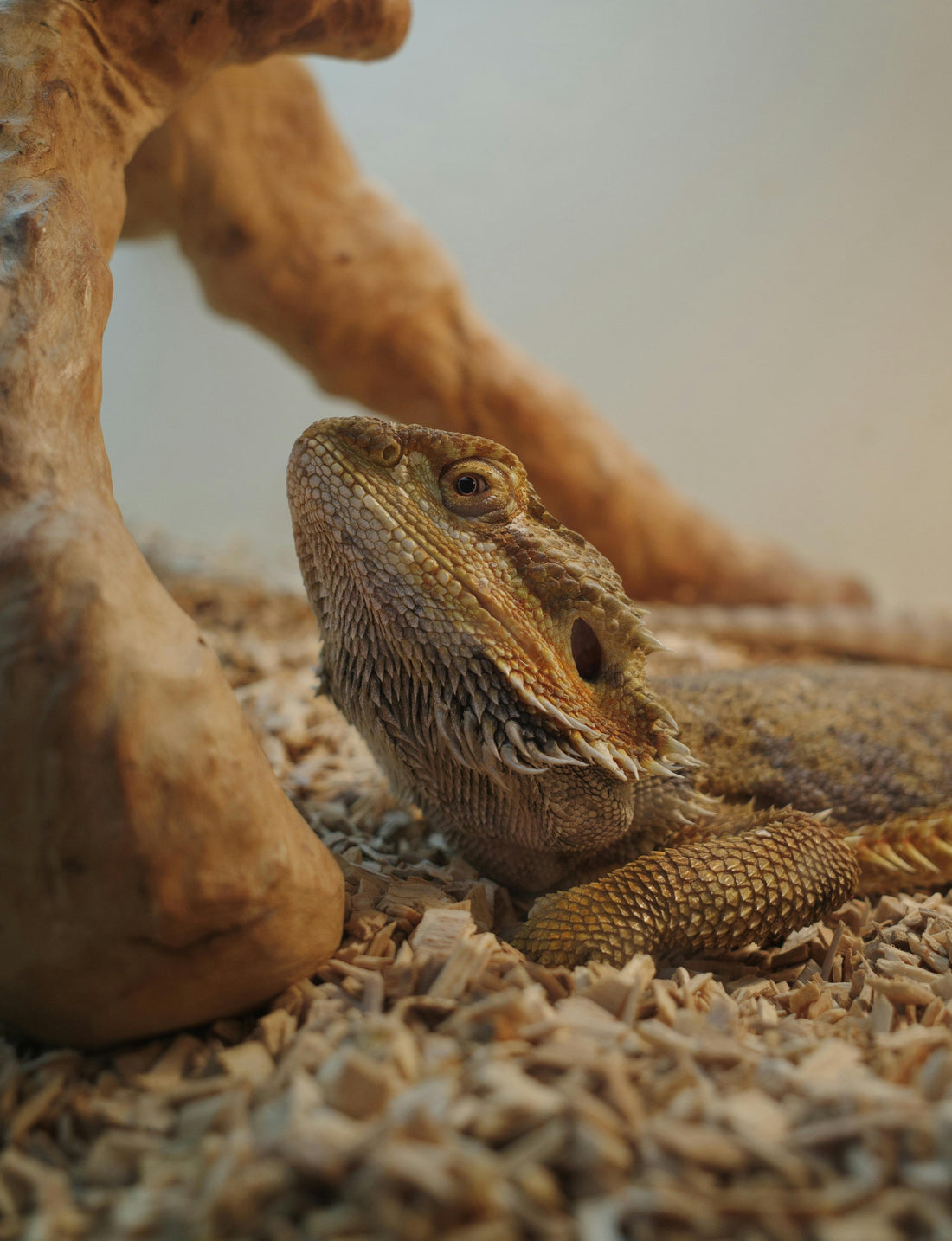
Tips on How to Create the Ideal Habitat for Your Bearded Dragon
Share
Bearded dragons are one of the most popular reptiles kept as pets in the U.S. With their docile nature and unique appearance, they make excellent companions for reptile enthusiasts. However, unlike cats or dogs, bearded dragons require a specialized environment to thrive. Creating the perfect habitat is essential for their health, longevity, and happiness. In this blog post, we’ll dive deep into the key elements of a bearded dragon’s habitat and provide tips to help you build the best environment for your pet.
1. Choosing the Right Tank: Size and Space Matter
One of the first things to consider when setting up a habitat for your bearded dragon is the size of the tank. Bearded dragons grow large, so a spacious enclosure is crucial to their health.
Tank Size Recommendations:
- For an adult bearded dragon (over 12 inches long), you’ll need a minimum of a 40-gallon tank, but larger is always better. A 75 to 120-gallon tank is ideal for adult bearded dragons to ensure they have enough room to roam, bask, and explore.
- For hatchlings and juveniles, a smaller tank of around 20 gallons is fine, but they will need to be upgraded as they grow.
Tip: The more space you can provide, the happier and healthier your bearded dragon will be!
2. Proper Lighting: UVB is Key
Bearded dragons need UVB lighting to synthesize vitamin D3, which is necessary for calcium absorption. Without proper UVB exposure, they can suffer from metabolic bone disease, which is a serious condition that affects their bones and overall health.
Lighting Guidelines:
- UVB Light: Use a 10.0 UVB bulb designed for reptiles. This should cover a good portion of the tank to ensure the bearded dragon can bask under it.
- Basking Light: Bearded dragons are cold-blooded, so they rely on a basking light to regulate their body temperature. The basking spot should be between 95 to 105°F (35-40°C) for adults, and slightly warmer for juveniles.
Tip: Replace UVB bulbs every 6 months, as their effectiveness decreases over time, even if they still appear to be working.
3. Temperature Control: The Importance of a Thermal Gradient
A proper temperature gradient is essential to mimic the natural environment of a bearded dragon. They need a hot basking spot on one side of the tank, as well as a cooler side where they can retreat to regulate their body temperature.
Temperature Guidelines:
- Basking Area: As mentioned, the basking area should be between 95-105°F for adults. For babies, a basking temperature of 100-110°F is ideal.
-Cool Side: The cool side of the tank should be kept at 75-85°F.
- Nighttime: At night, the temperature can drop to 65-75°F, as long as it doesn't go below 60°F.
Tip: Use a thermometer to monitor the temperature at both ends of the tank. Adjust the heat lamps or ceramic heaters accordingly to maintain a proper gradient.
4. Substrate: What to Use and What to Avoid
The substrate you choose for your bearded dragon’s tank can impact its health and comfort. While there are various options, it’s important to choose one that is safe and easy to maintain.
Safe Substrate Options:
- Reptile Carpet: This is a great option because it's easy to clean and safe for bearded dragons, as they can’t ingest it.
- Tile: Non-adhesive ceramic or porcelain tiles can provide a natural feel while being easy to clean.
- Paper Towels: A simple, inexpensive option that is easy to replace and maintain.
What to Avoid:
- Loose substrates like sand, gravel, or wood chips can cause impaction if your bearded dragon ingests them while hunting for food or while digging. This can lead to serious health issues.
Tip: Always prioritize safety and cleanliness when choosing a substrate. Easy-to-clean options can make maintenance a breeze.
5. Furnishing the Tank: Hiding Spots and Climbing Areas
Bearded dragons are semi-arboreal, which means they enjoy climbing and need plenty of opportunities to explore. Adding various elements to the tank can make the habitat more interesting and enriching for your pet.
Recommended Tank Accessories:
- Climbing Structures: Use branches, rocks, or reptile-safe climbing logs to allow your bearded dragon to climb.
- Hiding Spots: Bearded dragons need a place to hide to feel secure. Provide small caves or shelters where they can retreat when they feel stressed or want to sleep.
- Sand Dune/Flat Rocks: These allow your bearded dragon to bask and thermoregulate properly.
Tip: Decorate the tank with a variety of textures and levels, giving your bearded dragon a stimulating and safe environment to explore.
6. Humidity Levels: Keep It Balanced
Bearded dragons come from arid, desert environments, so they require low humidity levels. Too much moisture can lead to respiratory issues and skin problems.
Ideal Humidity Levels:
- Humidity: Keep the humidity between 30-40% in the tank. You can achieve this by using a hygrometer to measure and monitor the humidity levels.
- Mist the Tank: Occasionally mist the tank lightly to help maintain humidity, but avoid soaking the substrate or creating a damp environment.
Tip: Avoid using humidifiers or water features, as they can raise humidity to unhealthy levels.
Setting up the perfect habitat for your bearded dragon requires time, effort, and a bit of research, but it’s worth it to ensure they live a long, healthy, and happy life. By creating an environment that meets their specific needs for lighting, temperature, space, and enrichment, you’re giving your bearded dragon the best possible care.
Remember, bearded dragons are intelligent and curious creatures. Providing them with a well-maintained, enriched environment will not only keep them healthy but will also allow you to enjoy watching their fun and unique behaviors!
